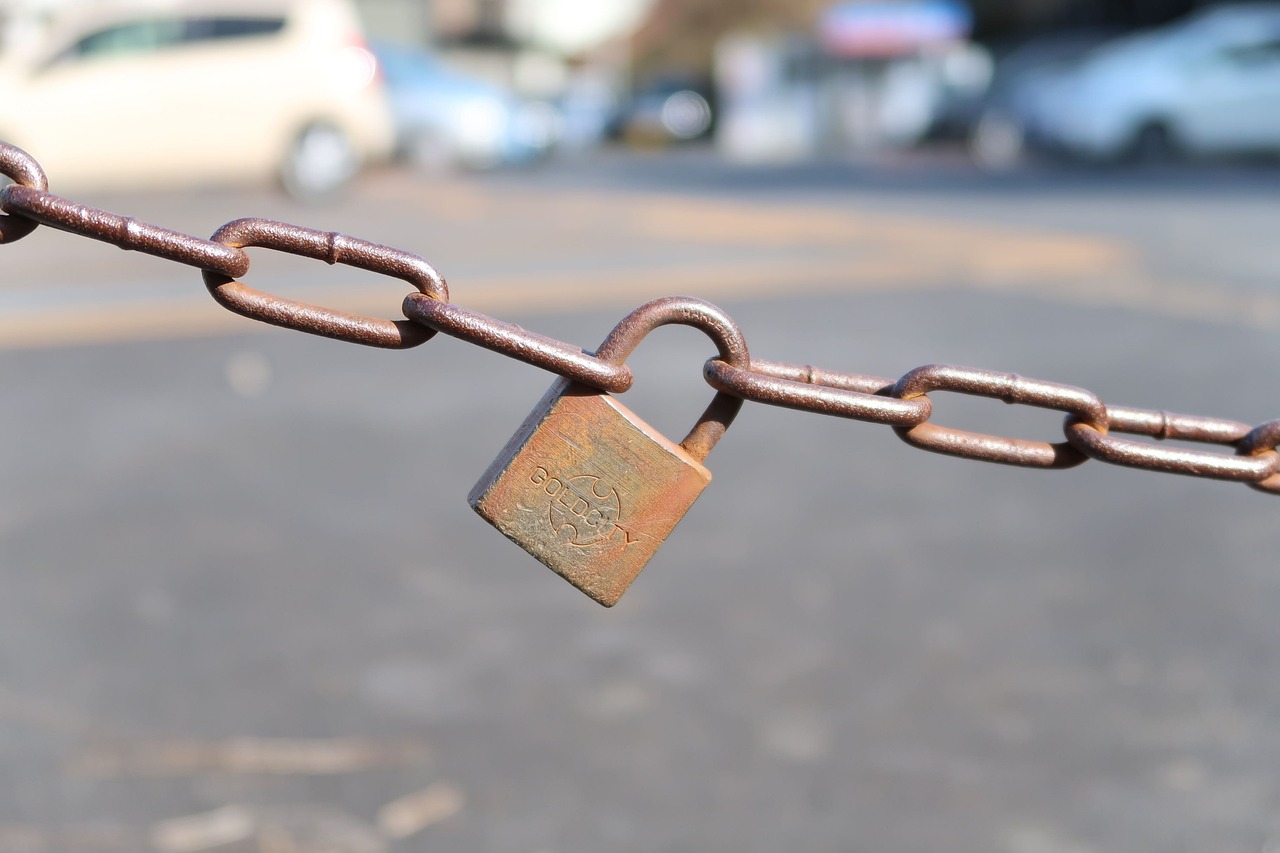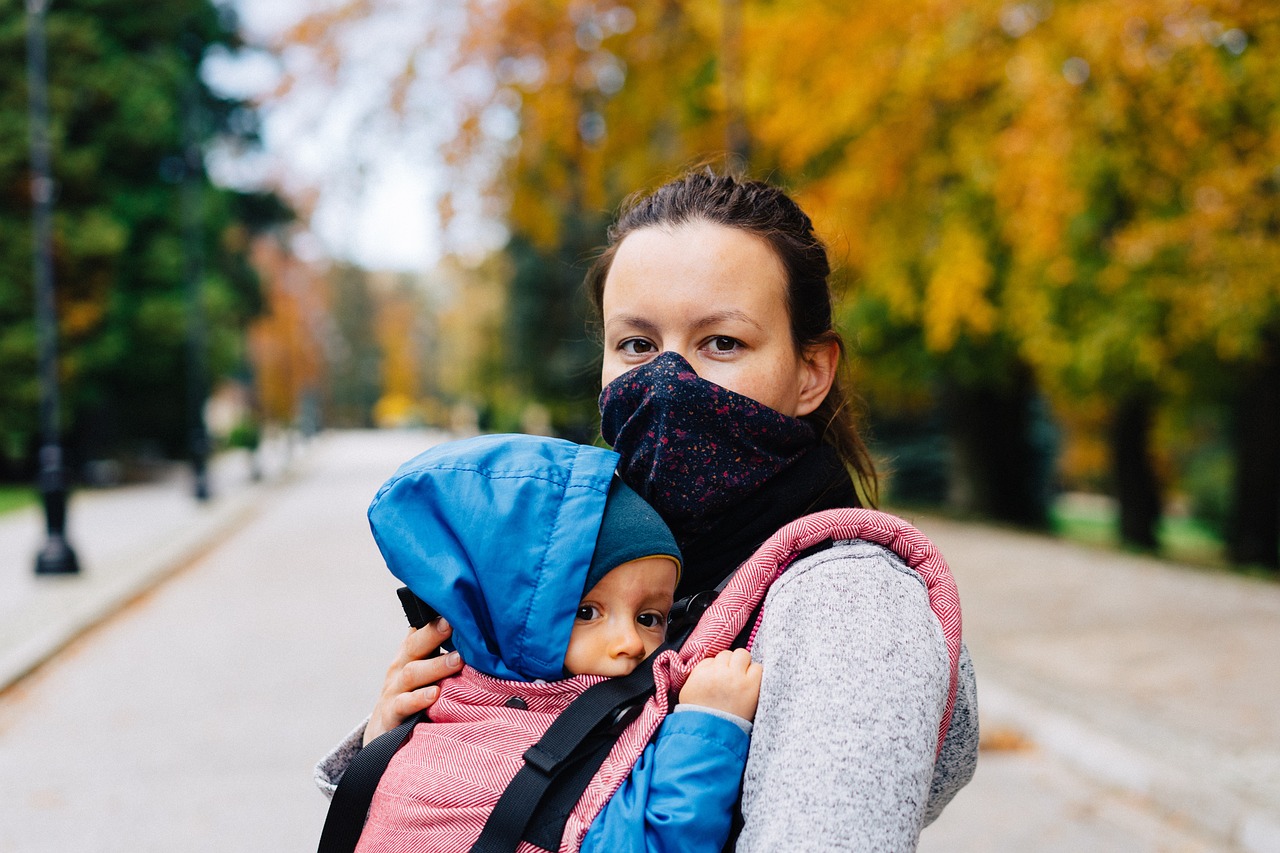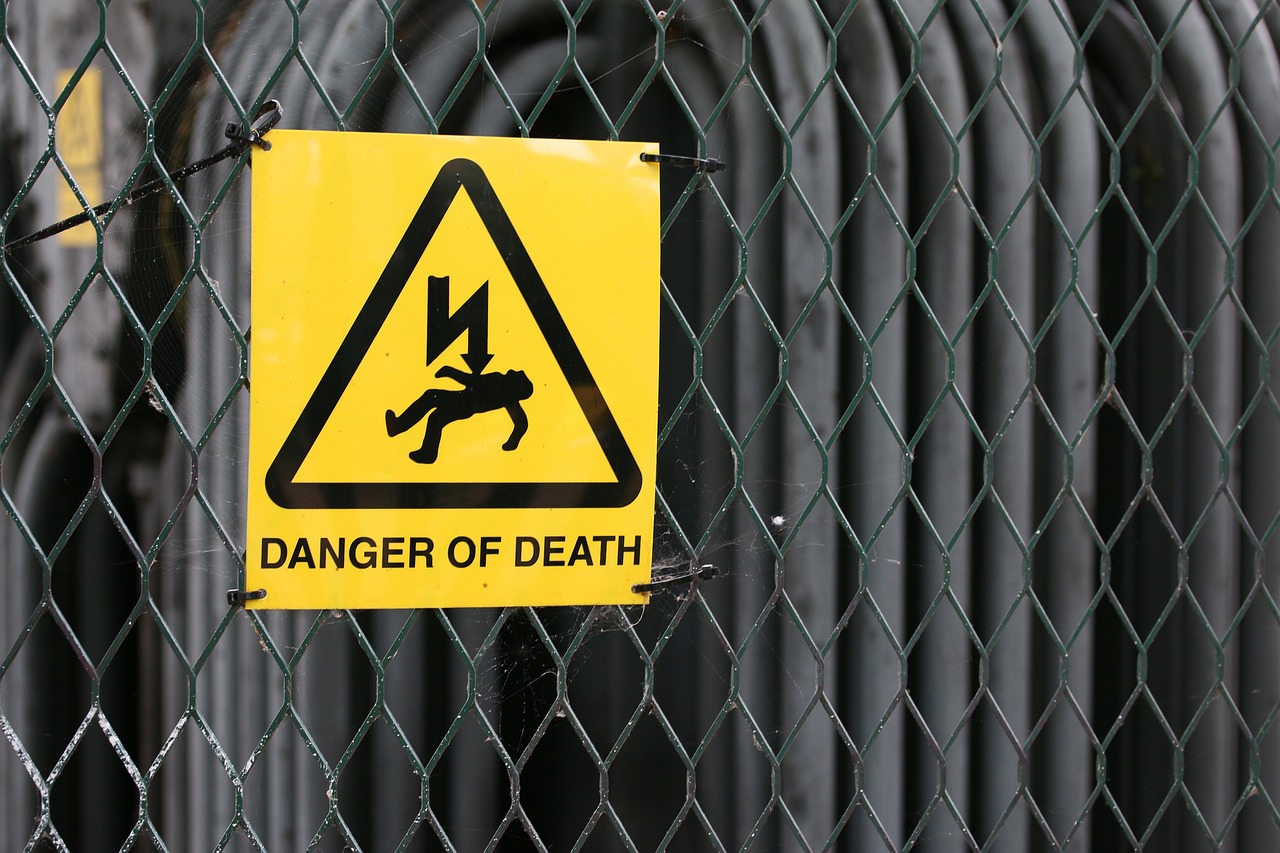Human Behavior and Its Unseen Effects on Safety Measures
When we think about safety measures, our minds often jump to equipment, protocols, and regulations. However, there's a crucial element lurking in the shadows: human behavior. It's fascinating how our actions, choices, and even our emotions can have profound impacts on safety protocols, often in ways we don't even realize. Understanding these dynamics is not just an academic exercise; it can lead to significant improvements in safety practices across various environments, from workplaces to public spaces.
Imagine a construction site bustling with activity. Workers are diligently following safety protocols, wearing helmets, and using equipment correctly. But what if, despite all these precautions, an accident occurs? The answer often lies in the subtleties of human behavior. Factors like stress, peer pressure, and even emotional states can lead individuals to deviate from established safety measures. This article dives deep into the intricate relationship between human behavior and safety, revealing how psychological and social influences can either bolster or undermine safety efforts.
One of the first aspects we need to consider is the psychology of risk perception. How do individuals perceive risk? Why do some people feel invincible while others are overly cautious? The answers to these questions are rooted in our psychological makeup. For instance, individuals with a higher tolerance for risk may underestimate dangers, leading to reckless behavior. Conversely, those with heightened sensitivity to risk may become paralyzed by fear, avoiding necessary tasks altogether. This duality illustrates the complex nature of human behavior and its direct implications for safety measures.
Moreover, the behavioral compliance with safety protocols is essential for effective safety management. Compliance is not merely about following rules; it's about understanding the rationale behind them. In many cases, individuals may comply with safety measures out of obligation rather than genuine understanding. This lack of engagement can be detrimental. To address this, organizations must foster a culture of safety where employees feel empowered and motivated to adhere to protocols. Engaging employees through training and education can significantly enhance their commitment to safety practices.
Training plays a pivotal role in shaping behavior towards safety compliance. Effective training programs can transform how employees perceive safety measures, instilling a sense of responsibility and awareness. For instance, simulation training provides a unique opportunity for individuals to experience realistic scenarios, allowing them to practice safety measures in a controlled environment. This hands-on approach not only boosts confidence but also reinforces the importance of adhering to safety protocols in real-life situations.
Furthermore, continuous learning and adaptation are crucial in the ever-evolving landscape of safety challenges. As new technologies and practices emerge, so too must our understanding of safety measures. Ongoing education ensures that individuals remain informed and prepared to tackle new risks. Organizations that prioritize continuous learning create a dynamic safety culture where employees are not just compliant but actively engaged in improving safety standards.
Social influences also play a significant role in shaping individual safety behaviors. The impact of peer influence cannot be underestimated. When individuals observe their colleagues disregarding safety protocols, they may feel compelled to follow suit, believing that conformity is more important than compliance. Therefore, fostering a positive organizational culture that emphasizes safety can have a ripple effect, encouraging employees to prioritize safety in their daily tasks.
In conclusion, the unseen effects of human behavior on safety measures are profound and multifaceted. By understanding the psychological, social, and emotional factors that influence our actions, we can enhance safety protocols and reduce risks in various environments. The journey towards improved safety is not just about rules and regulations; it's about understanding the people behind those measures and fostering a culture of safety that resonates at every level of an organization.
- What is the role of human behavior in safety measures?
Human behavior significantly influences how safety protocols are perceived and followed. Understanding these behaviors can lead to better safety practices. - How can training improve safety compliance?
Effective training programs engage employees, making them more aware of the importance of safety and encouraging adherence to protocols. - What impact does stress have on safety decisions?
Stress can impair judgment and decision-making, leading to risky behaviors. Managing stress effectively can improve safety outcomes.

The Psychology of Risk Perception
When we talk about safety, we often think about rules, protocols, and the latest technology designed to keep us safe. However, one critical aspect that often goes unnoticed is the psychology behind our perception of risk. Risk perception is not just about the actual dangers present; it’s heavily influenced by our thoughts, feelings, and experiences. Ever wondered why some people take risks that others wouldn’t even dream of? This divergence in behavior can be traced back to how individuals perceive risk, which is shaped by various psychological factors.
One of the most fascinating elements of risk perception is the availability heuristic. This cognitive bias leads us to judge the likelihood of an event based on how easily examples come to mind. For instance, if someone has recently heard about a workplace accident, they might overestimate the chances of it happening again. In contrast, if they’ve never witnessed an incident, they may feel overly confident in their safety. This can create a dangerous disconnect between actual risk and perceived risk, influencing how strictly safety measures are followed.
Another crucial factor is the framing effect. The way information is presented can significantly alter our perception of risk. For example, if a safety guideline is framed as a requirement, people may view it as a burden. However, if it’s presented as a means to protect their health and well-being, compliance is likely to increase. This highlights the importance of communication in safety protocols. Organizations must be mindful of how they convey safety information to foster a culture of compliance and awareness.
Moreover, our emotional responses play a pivotal role in risk perception. Emotions like fear can skew our understanding of danger. When faced with a potential threat, fear can either paralyze us or propel us into over-cautious behavior. On the flip side, feelings of invincibility or overconfidence can lead to reckless decisions. So, how do we strike a balance? Understanding our emotional triggers and their impact on our behavior is essential for making informed safety choices.
It’s also interesting to note that social influences can shape our risk perception. We often look to others for cues on how to behave in uncertain situations. If our peers are lax about safety protocols, we might subconsciously adopt a similar attitude, even if we understand the risks involved. This phenomenon underscores the importance of fostering a strong safety culture within organizations, where adherence to safety measures is not just encouraged but expected.
In summary, the psychology of risk perception is a complex interplay of cognitive biases, emotional responses, and social influences. By understanding these dynamics, we can enhance our safety measures and reduce risks in various environments. After all, creating a safer world isn't just about having the right tools; it’s about understanding the human mind and how it influences our behavior.
- What is risk perception? Risk perception refers to how individuals evaluate the potential dangers associated with a specific situation or behavior.
- How does the availability heuristic affect safety? The availability heuristic can lead individuals to overestimate risks based on recent experiences or information that easily comes to mind.
- What role do emotions play in risk assessment? Emotions can significantly influence how we assess risks, often leading to either overly cautious or reckless behavior.
- Why is social influence important in safety compliance? Social influence shapes our behavior; if peers disregard safety protocols, individuals may feel inclined to do the same, impacting overall compliance.

Behavioral Compliance with Safety Protocols
When it comes to safety protocols, behavioral compliance is not just a checkbox to tick off; it's a critical component that determines the effectiveness of any safety management system. Have you ever wondered why some individuals strictly adhere to safety measures while others seem to disregard them? Understanding the nuances of human behavior is essential in unraveling this mystery. Behavioral compliance is influenced by a myriad of factors, including individual attitudes, environmental cues, and the perceived importance of the safety protocols in place.
One of the primary drivers of compliance is the individual's perception of risk. For instance, if someone believes that a particular safety measure is vital for their well-being, they are more likely to follow it. Conversely, if they perceive the risk as minimal, they might feel justified in ignoring the guidelines. This perception can be shaped by various elements, such as previous experiences, cultural background, and even the influence of peers. In fact, social dynamics play a significant role in how safety protocols are viewed and followed. When individuals observe their colleagues adhering to safety measures, they are more likely to comply themselves, creating a positive feedback loop that enhances overall safety culture.
Moreover, the environment itself can either encourage or discourage compliance. For example, a workplace that actively promotes safety through visible reminders, such as posters and regular training sessions, fosters a culture of compliance. On the other hand, a lack of visible commitment to safety can lead to complacency among employees. It's essential for organizations to create an atmosphere where safety is prioritized and valued. This can be achieved through effective communication, where leaders clearly articulate the importance of safety protocols and their impact on everyone's well-being.
To illustrate the impact of various factors on behavioral compliance, consider the following table:
| Factor | Impact on Compliance |
|---|---|
| Risk Perception | Higher risk perception leads to increased compliance. |
| Peer Influence | Positive peer behavior encourages others to comply. |
| Training and Education | Effective training enhances understanding and adherence. |
| Organizational Culture | A strong safety culture promotes consistent compliance. |
Additionally, the role of training and education cannot be overstated. When employees are equipped with the right knowledge and skills, they are more likely to appreciate the importance of following safety protocols. Training should not be a one-time event; rather, it should be ongoing to adapt to new challenges and reinforce safe behaviors. Organizations that invest in continuous learning create a workforce that is not only knowledgeable but also committed to maintaining high safety standards.
In conclusion, behavioral compliance with safety protocols is a complex interplay of individual perceptions, social influences, and organizational culture. By understanding these dynamics, organizations can implement strategies that enhance compliance, ultimately leading to safer environments for everyone involved. The question remains: how can we continue to foster this compliance in an ever-evolving landscape of safety challenges?
- What is behavioral compliance? Behavioral compliance refers to the extent to which individuals adhere to established safety protocols and guidelines.
- Why is compliance important? Compliance is crucial because it directly impacts the effectiveness of safety measures and helps prevent accidents and injuries.
- How can organizations improve compliance? Organizations can improve compliance by enhancing training programs, fostering a positive safety culture, and actively engaging employees in safety discussions.
- What role does peer influence play in compliance? Peer influence can significantly affect compliance; when employees see their colleagues following safety protocols, they are more likely to do the same.

The Role of Training and Education
When it comes to safety compliance, training and education are the cornerstones that lay the foundation for effective safety measures. Imagine stepping into a workplace where every individual is not just aware of the safety protocols but also understands the rationale behind them. This understanding transforms compliance from a mere checkbox exercise into a proactive commitment to safety. The reality is, well-structured training programs do more than just inform; they inspire a culture of safety that permeates every level of an organization.
One of the most significant aspects of training is its ability to change behavioral patterns. Through engaging and interactive learning experiences, employees can better grasp the importance of adhering to safety protocols. For instance, training sessions that incorporate real-life scenarios allow individuals to visualize potential hazards and the consequences of neglecting safety measures. This practical approach not only enhances knowledge retention but also fosters a sense of responsibility among employees.
Moreover, the effectiveness of training can be significantly enhanced through the use of simulation techniques. Simulations create an environment where employees can practice their responses to emergencies without the fear of real-world repercussions. This hands-on experience is invaluable, as it prepares them for actual situations they might encounter on the job. Consider a fire drill; when employees have previously participated in simulated evacuations, they are more likely to respond swiftly and effectively when the real alarm sounds.
Another critical factor is the concept of continuous learning. Safety protocols are not static; they evolve as new challenges and technologies emerge. Organizations that prioritize ongoing education ensure that their employees stay up-to-date with the latest safety practices. This commitment to learning can take many forms, from regular workshops to online courses. By fostering an environment where continuous education is valued, organizations can maintain high safety standards and adapt to new risks as they arise.
Lastly, it’s essential to recognize that training and education should not be a one-time event. Instead, they should be integrated into the organizational culture. This means that safety training should be a regular part of the work routine, not just something that happens during onboarding. By making safety a consistent topic of discussion and practice, organizations can cultivate a workforce that is not only knowledgeable but also genuinely invested in maintaining a safe working environment.
In conclusion, the role of training and education in shaping safety behavior cannot be overstated. By providing employees with the knowledge, skills, and confidence they need to act safely, organizations can drastically reduce risks and enhance overall safety compliance. Investing in training is not just a regulatory requirement; it's a strategic decision that pays dividends in the form of a safer workplace.
- Why is training important for safety compliance?
Training equips employees with the necessary knowledge and skills to recognize hazards and respond appropriately, thus enhancing overall safety. - What types of training are most effective?
Interactive and simulation-based training methods tend to be more effective as they engage employees and provide practical experience. - How often should safety training occur?
Safety training should be ongoing, with regular updates to ensure employees are aware of the latest safety protocols and practices. - Can training reduce workplace accidents?
Yes, effective training can significantly reduce workplace accidents by fostering a culture of safety and ensuring employees are prepared for emergencies.

Impact of Simulation Training
Simulation training has emerged as a transformative tool in enhancing safety protocols across various industries. Imagine stepping into a virtual world where you can face real-life scenarios without the risk of actual harm. This approach not only prepares individuals for unexpected situations but also ingrains safety behaviors that can save lives. The impact of simulation training extends beyond mere practice; it fosters a deeper understanding of safety protocols and cultivates a culture of compliance.
One of the primary benefits of simulation training is its ability to create a safe environment for learning. Participants can engage in realistic scenarios that mimic high-pressure situations they might encounter in their jobs. For instance, in a construction setting, workers can practice responding to potential hazards, such as equipment malfunctions or environmental dangers, all while receiving immediate feedback. This hands-on experience helps to solidify their knowledge and boosts their confidence when faced with actual risks.
Moreover, simulation training can significantly enhance retention rates. Studies have shown that individuals who undergo simulation-based training tend to remember the procedures and protocols better than those who engage in traditional training methods. This is because simulation engages multiple senses and promotes active participation. When learners are fully immersed in a scenario, they are more likely to internalize the lessons being taught.
To illustrate the effectiveness of simulation training, consider the following table that compares traditional training methods with simulation-based training:
| Aspect | Traditional Training | Simulation Training |
|---|---|---|
| Engagement Level | Passive learning | Active participation |
| Realism | Theoretical scenarios | Realistic, immersive environments |
| Retention Rate | Moderate | High |
| Feedback | Delayed feedback | Immediate feedback |
Additionally, simulation training encourages teamwork and communication among participants. In many workplace settings, safety is not just an individual responsibility; it requires collaboration. Simulations often involve group activities where participants must work together to solve problems or respond to emergencies. This collaborative aspect not only builds camaraderie but also reinforces the importance of clear communication during critical moments.
In conclusion, the impact of simulation training on safety measures cannot be overstated. By providing a realistic and engaging learning environment, it prepares individuals to face challenges head-on while enhancing their understanding of safety protocols. As organizations continue to prioritize safety, integrating simulation training into their programs will undoubtedly lead to more effective compliance and, ultimately, a safer workplace.
- What is simulation training? Simulation training is a method that uses realistic scenarios to teach individuals how to respond to various situations, particularly in high-risk environments.
- How does simulation training improve safety compliance? It enhances engagement, retention, and teamwork, allowing participants to practice safety protocols in a controlled, risk-free setting.
- Can simulation training be used in any industry? Yes, simulation training is versatile and can be adapted for various sectors, including healthcare, construction, manufacturing, and emergency services.
- What are the key benefits of simulation training? Key benefits include increased engagement, better retention of information, immediate feedback, and improved teamwork.

Continuous Learning and Adaptation
In today's fast-paced world, the landscape of safety challenges is constantly evolving. This makes continuous learning and adaptation not just beneficial, but essential for maintaining safety standards. Imagine trying to navigate a winding road without ever looking at a map; you might have a general sense of direction, but without updated information, you're likely to encounter unexpected hazards. Similarly, when organizations fail to prioritize ongoing education in safety protocols, they risk exposing themselves to unforeseen dangers.
Continuous learning involves not only the initial training but also the ongoing education that keeps employees informed about the latest safety practices and technologies. This ongoing process can take various forms, including workshops, online courses, and refresher training sessions. Each of these methods serves to reinforce the knowledge that employees have already gained and introduces new concepts that can help them respond effectively to emerging risks.
Moreover, adaptation is crucial when it comes to implementing safety measures. For instance, consider how a company might face a new regulatory requirement or an innovative technology that changes the way work is done. Without a culture that encourages adaptation, employees may resist change, leading to non-compliance and increased risk. A proactive approach to learning ensures that everyone is on the same page and equipped to handle new challenges.
To illustrate the importance of continuous learning and adaptation, let's take a look at a case study of a manufacturing plant that implemented a new safety protocol after a series of near-miss incidents. Initially, the employees were skeptical and hesitant to adopt the new measures. However, the management organized a series of interactive workshops that not only educated the staff about the new protocols but also included hands-on practice. Over time, the employees began to see the value in the changes, leading to a significant reduction in incidents. The key takeaway? When organizations invest in continuous learning, they empower their workforce to adapt and thrive in a changing environment.
In addition to formal training programs, fostering an environment that encourages open communication and feedback is vital. Employees should feel comfortable discussing safety concerns and suggesting improvements without fear of retribution. This not only enhances their engagement but also contributes to a culture where safety is prioritized and continuously improved.
In conclusion, the need for continuous learning and adaptation in safety protocols cannot be overstated. Organizations that embrace this philosophy not only safeguard their employees but also enhance overall productivity and morale. By committing to ongoing education and fostering an adaptable culture, businesses can navigate the complexities of safety in an ever-changing world.
- Why is continuous learning important for safety?
Continuous learning helps keep employees updated on the latest safety protocols and technologies, reducing the risk of accidents. - How can organizations encourage adaptation to new safety measures?
By fostering a culture of open communication and providing regular training sessions, organizations can help employees feel comfortable with changes. - What are some effective methods for ongoing safety training?
Methods can include workshops, online courses, simulations, and hands-on practice sessions.

Social Influences on Safety Behavior
When we think about safety, our minds often jump to protocols, equipment, and regulations. However, there’s an invisible force at play that can dramatically shape how we behave in relation to safety: social influences. Just like a ripple effect in a pond, the behaviors and attitudes of those around us can significantly impact our own actions, particularly in safety-related contexts. Have you ever noticed how you might drive more cautiously when you have friends in the car? Or how a group of coworkers might collectively ignore safety guidelines if they see someone else doing the same? This phenomenon is driven by the complex interplay of peer influence, organizational culture, and social norms.
Peer influence is particularly powerful. It’s no secret that humans are social creatures, and we often look to others to gauge what is acceptable behavior. In safety contexts, this can mean that if one person disregards a safety protocol, others may feel emboldened to do the same. A study conducted by the National Safety Council found that workplaces with strong peer accountability saw a significant reduction in safety incidents. This suggests that when employees feel supported by their peers in adhering to safety measures, compliance increases. It’s almost like a team sport; when everyone is on board, the chance of winning— or in this case, staying safe— goes up!
Moreover, the culture of an organization plays a crucial role in shaping safety behaviors. Organizations that prioritize safety create an environment where employees feel empowered to speak up about unsafe practices. Leadership commitment to safety can set the tone for the entire workplace. When leaders model safe behavior and encourage open communication, it fosters a culture where safety is everyone’s responsibility. This is not just a top-down approach; it’s about creating a community where safety is ingrained in the organizational fabric.
To illustrate this point, consider the following table that summarizes how different social factors influence safety behavior:
| Social Factor | Influence on Safety Behavior |
|---|---|
| Peer Pressure | Can lead to either compliance or non-compliance with safety protocols depending on the group’s attitude. |
| Organizational Culture | A strong safety culture promotes adherence to safety practices and encourages reporting of unsafe conditions. |
| Communication | Open communication fosters trust and encourages employees to voice safety concerns. |
| Leadership | Leaders who prioritize safety can inspire similar behaviors in their teams. |
Additionally, social norms— the unwritten rules about how to behave— can also dictate safety behavior. In environments where safety is not prioritized, individuals may feel less inclined to adhere to safety measures. This is often seen in high-risk industries like construction or manufacturing, where the pressure to meet deadlines can overshadow safety considerations. But what if we flipped the script? What if prioritizing safety became the norm? By actively working to shift social norms within organizations, we can create a culture where safety is not just a protocol but a shared value.
In conclusion, social influences on safety behavior are profound and multifaceted. They remind us that safety is not merely an individual responsibility but a collective one. By fostering strong peer relationships, cultivating a positive organizational culture, and promoting open communication, we can enhance safety compliance and ultimately reduce risks. So next time you’re in a safety meeting or a training session, remember that your behavior can influence those around you— and together, you can create a safer environment for everyone.
- What are social influences on safety behavior? Social influences encompass peer pressure, organizational culture, and social norms that affect how individuals adhere to safety protocols.
- How can organizations improve safety compliance? By fostering a strong safety culture, encouraging open communication, and modeling safe behaviors, organizations can enhance compliance with safety measures.
- Why is peer influence important in safety contexts? Peer influence is crucial because individuals often look to their peers to determine acceptable behavior, which can either promote or hinder safety practices.
- What role does leadership play in safety behavior? Leadership commitment to safety sets the tone for the organization, inspiring employees to prioritize safety in their daily activities.

Emotional Factors and Safety Decisions
When it comes to safety decisions, emotions play a crucial role that often goes unnoticed. Think about it: how many times have you made a split-second decision based on how you felt at that moment? Emotions can cloud our judgment, leading us to either take unnecessary risks or become overly cautious. This duality can significantly impact our adherence to safety protocols. For instance, when someone feels anxious about a potential hazard, they might either avoid the situation altogether or react in a way that escalates the risk. On the flip side, feeling overly confident can lead individuals to underestimate dangers, putting themselves and others at risk.
One of the most significant emotional factors influencing safety decisions is fear. Fear can act as a double-edged sword. On one hand, it can motivate individuals to adhere strictly to safety measures, such as wearing protective gear or following established protocols. On the other hand, excessive fear can lead to paralysis by analysis, where individuals become so overwhelmed by potential dangers that they fail to act altogether. This is particularly evident in high-stress environments, such as construction sites or healthcare settings, where the stakes are incredibly high.
Moreover, the emotional state of an individual can significantly affect their perception of risk. For example, when someone is feeling stressed, their ability to assess risks accurately diminishes. Stress can lead to hasty decisions that might ignore critical safety measures. It’s essential to recognize that our emotional responses are often interconnected with our cognitive processes. This means that when we are stressed, our ability to think clearly diminishes, which can lead to poor safety decisions.
To better understand the relationship between emotions and safety decisions, let’s consider a few common emotional states and their potential impacts:
| Emotional State | Potential Impact on Safety |
|---|---|
| Fear | Increased adherence to safety protocols; possible paralysis in decision-making |
| Overconfidence | Underestimating risks; neglecting safety measures |
| Stress | Impaired judgment; hasty and unsafe decisions |
| Anxiety | Increased caution; potential avoidance of necessary actions |
Understanding these emotional influences is vital for organizations aiming to enhance safety measures. By fostering an environment that promotes emotional well-being, companies can help employees make better safety decisions. This can involve implementing stress management programs, providing emotional support, and creating a culture where employees feel safe to express their concerns without fear of repercussions.
In conclusion, emotional factors are not just background noise in the context of safety decisions; they are central to how individuals perceive and respond to risks. By recognizing the profound impact emotions have on our choices, we can take steps to mitigate their negative effects and promote a culture of safety that is not only effective but also empathetic to the emotional landscape of the workplace.
- How do emotions affect safety decisions? Emotions can cloud judgment, leading to either overly cautious behavior or risky decisions, impacting adherence to safety protocols.
- What role does fear play in safety compliance? Fear can motivate individuals to follow safety measures but can also cause paralysis in decision-making if it becomes overwhelming.
- How can organizations address emotional factors in safety? Organizations can implement stress management programs and foster a supportive culture to help employees make better safety decisions.

Fear and Overconfidence
When it comes to safety, our emotions can be as powerful as any physical barrier. Fear and overconfidence are two emotional states that can drastically affect how we perceive risks and respond to safety protocols. Imagine walking along a busy street: if you're filled with fear, you might hesitate to cross even when the light is green, while being overly confident could lead you to dash across without a second thought. This tug-of-war between fear and overconfidence can create a precarious balance in our safety behaviors.
Fear often acts as a protective mechanism, prompting individuals to take precautions. However, excessive fear can lead to paralysis. For instance, a worker who is too afraid of falling might avoid necessary tasks altogether, which could ironically lead to unsafe situations. On the flip side, overconfidence can lead to a false sense of security. A person who believes they are invincible might skip wearing safety gear or ignore established protocols, believing that they can handle any situation that arises. This duality highlights a critical point: finding the right balance is essential for effective safety practices.
To better understand the dynamics of fear and overconfidence in safety contexts, let’s explore some key factors:
- Risk Assessment: Fear can enhance our ability to assess risks accurately, while overconfidence can cloud our judgment.
- Behavioral Responses: Fear may lead to overly cautious behavior, while overconfidence can result in reckless actions.
- Training Impact: Training programs that address these emotional factors can help individuals strike a better balance.
One way organizations can address these emotional influences is through targeted training that encourages self-awareness. For example, simulations that expose employees to risky situations can help them recognize their emotional responses and learn to manage them effectively. By fostering an environment where individuals feel safe to express their fears and acknowledge their overconfidence, organizations can enhance overall safety compliance.
Furthermore, it’s essential to create a culture that values open communication about safety concerns. When employees feel comfortable discussing their fears or overconfidence, it can lead to a more robust understanding of risks and better adherence to safety protocols. This culture of safety can be nurtured through regular discussions, workshops, and even anonymous feedback mechanisms that allow individuals to voice their concerns without fear of judgment.
In conclusion, navigating the emotional landscape of fear and overconfidence is vital for improving safety outcomes. By recognizing the impact these emotions have on our behaviors, we can implement strategies that promote a balanced approach to risk management. After all, safety is not just about rules and regulations; it’s about understanding the human elements that drive our decisions.
- How can fear impact safety behaviors? Fear can lead to cautious behavior, which may be beneficial in some situations but can also result in avoidance of necessary tasks.
- What are the risks of overconfidence in safety? Overconfidence can lead individuals to underestimate risks, resulting in unsafe practices and potentially dangerous situations.
- How can organizations address fear and overconfidence? Through training programs that promote self-awareness, open communication, and practical simulations that help employees recognize and manage their emotional responses.

Stress and Its Impact on Safety
Stress is an ever-present element in our fast-paced world, and its effects on safety are often underestimated. When individuals are under stress, their ability to make sound decisions diminishes significantly. Imagine trying to drive a car while juggling multiple tasks; the stress can lead to distractions, which in turn can cause accidents. This scenario highlights a crucial aspect of safety: our mental state directly affects our ability to adhere to safety protocols.
Research indicates that stress can lead to cognitive overload, where the brain is bombarded with too much information, making it difficult to focus on the task at hand. This cognitive overload can result in mistakes, lapses in attention, and ultimately, safety incidents. For instance, in high-pressure environments like construction sites or healthcare facilities, the stakes are incredibly high. A moment of distraction due to stress can lead to catastrophic outcomes, emphasizing the need for effective stress management strategies.
Furthermore, stress doesn't just affect the individual; it can create a ripple effect throughout a team or organization. When one team member is stressed, it can influence the entire group's dynamics. This phenomenon can lead to a culture of anxiety, where employees feel pressured to perform despite their mental state. Addressing stress within teams is essential for fostering a safe work environment. Organizations should consider implementing stress-reduction programs, such as mindfulness training or team-building activities, to promote a healthier workplace.
To illustrate the impact of stress on safety, consider the following table that outlines the common stressors and their potential effects on safety behavior:
| Common Stressors | Potential Effects on Safety Behavior |
|---|---|
| High Workload | Increased errors, decreased attention to detail |
| Time Pressure | Rushed decisions, shortcuts taken |
| Interpersonal Conflict | Distraction, decreased teamwork |
| Uncertainty | Increased anxiety, hesitation in decision-making |
Implementing effective stress management techniques can significantly improve safety outcomes. Organizations can provide training on stress management and encourage employees to take breaks when needed. Moreover, fostering an open environment where employees feel comfortable discussing their stressors can lead to better overall safety compliance. After all, a relaxed mind is more likely to make safe and informed decisions.
In conclusion, the relationship between stress and safety is complex but undeniable. By recognizing the impact of stress on decision-making and safety behavior, organizations can take proactive steps to mitigate its effects. This not only enhances the safety of individual employees but also contributes to a culture of safety that benefits everyone involved.
- How does stress affect decision-making in high-pressure environments?
Stress can impair cognitive functions, leading to poor decision-making and increased likelihood of safety incidents. - What are some effective stress management techniques?
Mindfulness, regular breaks, and open communication can help manage stress levels in the workplace. - Can organizational culture influence employee stress levels?
Yes, a supportive and open culture can reduce stress, while a high-pressure environment can exacerbate it. - How can organizations promote safety in stressful situations?
Implementing training programs, encouraging breaks, and fostering teamwork can enhance safety even under stress.
Frequently Asked Questions
- What is the role of human behavior in safety measures?
Human behavior plays a crucial role in safety measures as it influences how individuals perceive risks and comply with safety protocols. Understanding these behaviors can lead to more effective safety strategies and reduce potential hazards in various environments.
- How does risk perception affect safety compliance?
Risk perception affects safety compliance by shaping how individuals assess threats and respond to safety measures. If a person perceives a risk as minimal, they may be less likely to adhere to safety protocols, potentially leading to unsafe situations.
- What impact does training have on safety behavior?
Training significantly enhances safety behavior by equipping individuals with the knowledge and skills necessary to comply with safety protocols. Effective training programs can foster a culture of safety, ensuring that employees are aware of risks and know how to mitigate them.
- Can simulation training improve safety outcomes?
Absolutely! Simulation training provides realistic scenarios where individuals can practice safety measures without real-world consequences. This hands-on approach helps reinforce learning and prepares individuals to respond effectively in actual safety situations.
- Why is continuous learning important for safety?
Continuous learning is vital for adapting to evolving safety challenges. Ongoing education ensures that individuals stay informed about the latest safety protocols, technologies, and best practices, ultimately maintaining high safety standards in any environment.
- How do social influences affect safety behavior?
Social influences, such as peer pressure and organizational culture, can significantly impact individual safety behaviors. When a workplace promotes safety, individuals are more likely to comply with protocols, creating a safer environment for everyone.
- What emotional factors impact safety decisions?
Emotional factors, including fear and overconfidence, can greatly influence safety decisions. Fear may lead to overly cautious behavior, while overconfidence can result in risky actions, making it essential to find a balance for effective safety management.
- How does stress affect safety compliance?
Stress can impair judgment and decision-making, negatively impacting safety compliance. Implementing stress management strategies can help individuals maintain focus and make better safety-related decisions, ultimately improving safety outcomes.



















